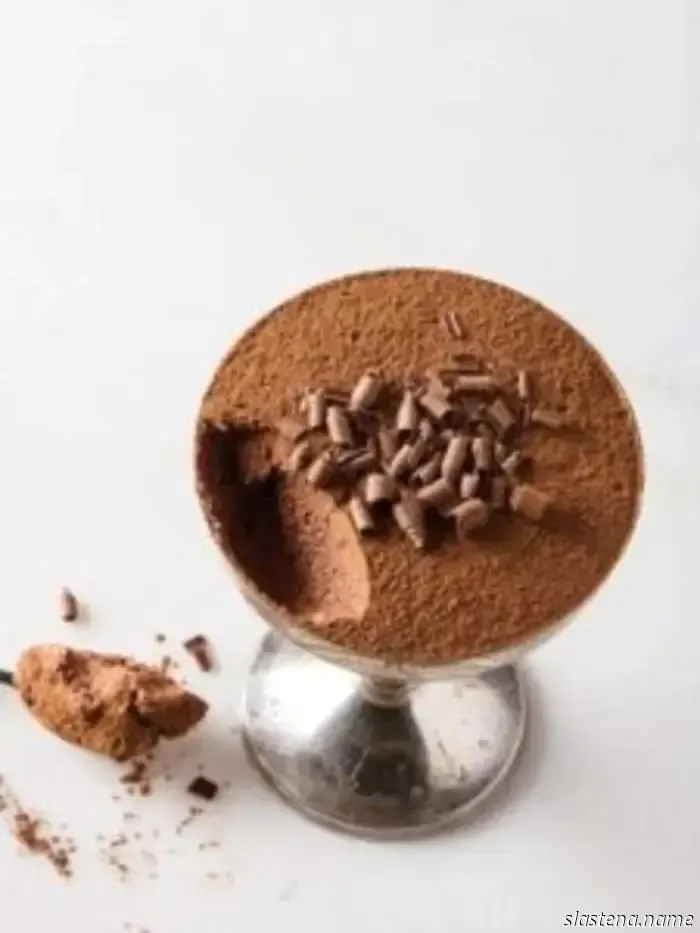
Baking School Comprehensive Guide: Chocolate Mousse - Bake from Scratch
There are few desserts that combine indulgence with an incredibly light texture. It may seem like sorcery, but chocolate mousse is actually a result of chemistry. Grasping the purpose of each ingredient—chocolate, yolks, whites, and cream—enhances the satisfaction of making this recipe. This ultimate chocolate mousse recipe is straightforward, richly chocolaty, and ideal for those who want a make-ahead dessert that is both elegant and forgiving.
Click here to download a printable PDF of this lesson!
INGREDIENT OVERVIEW
Chocolate mousse appears effortless when enjoyed, yet every component plays a critical role. From stabilizing foams to emulsifying fats, each ingredient contributes to the mousse's perfect blend of richness and lightness.
SEMISWEET CHOCOLATE (55% CACAO): Chocolate imparts flavor and provides structure. The cocoa solids and cocoa butter combine with butter and egg yolks, forming a smooth base that sets firmly when chilled. At 55% cocoa content, the sugar to cocoa ratio offers depth without excessive bitterness. Chocolate's cocoa butter solidifies upon cooling, creating a crystalline structure that helps the mousse firm up while still melting luxuriously on the palate.
UNSALTED BUTTER: Butter enhances and loosens the melted chocolate, giving it a glossy appearance and preventing a tough, grainy texture. As an emulsion of fat and water, butter aids in integrating the chocolate with the egg yolks. The fats envelop air bubbles and proteins, increasing stability. In mousse, the fat from butter maintains a creamy texture rather than a chalky one.
EGG YOLKS: Yolks serve as emulsifiers due to lecithin, connecting fat from chocolate and butter with liquid sugar syrup. Beaten with sugar to a ribbon stage, they entrap fine air bubbles and add viscosity. The combination of heat and sugar partially modifies yolk proteins, allowing them to elongate and stabilize without curdling, which helps form the structural backbone of the mousse.
GRANULATED SUGAR: Sugar stabilizes foams throughout the process. When combined with yolks, it prevents curdling; with whites, it reinforces protein films surrounding air bubbles; and alongside cream, it adds sweetness while softening dairy proteins. Sugar is hygroscopic, meaning it absorbs moisture, which delays the coagulation of egg proteins and affords more time for whipping and folding without collapse.
EGG WHITES: Whipped whites are what lift the mousse. The proteins unravel under whipping, capturing air in a delicate network. Adding sugar gradually strengthens this network, creating glossy peaks that fold without breaking. Stiff but moist peaks indicate optimal denaturation; if too soft, the mousse will fall; if too dry, folding will break the foam.
HEAVY WHIPPING CREAM: Cream whipped to stiff peaks adds richness and body. Fat globules in the cream enrobe and stabilize air bubbles, while the liquid component provides a luxurious smoothness. The 36% to 40% fat content in heavy cream uniquely allows it to hold peaks; when folded in, it cushions the structure built by yolks and whites, preventing collapse during cooling.
VANILLA EXTRACT: Vanilla not only fragrances but also enhances the chocolate’s complexity through volatile aromatics. Vanillin compounds interact with cocoa’s phenols, elevating the perception of depth and sweetness without increasing sugar content.
COCOA POWDER AND CHOCOLATE SHAVINGS (GARNISH): These add finishing details that enhance contrast. Cocoa dust highlights bitterness, while shaved chocolate adds texture. Cocoa's fine particles quickly absorb moisture on the palate, making the mousse feel even lighter by comparison.
ESSENTIAL TOOLS
Though mousse may seem simple, precision is vital. The right tools safeguard delicate foams, prevent burning, and help retain every bit of air you’ve so carefully created.
GLASS BOWLS: Glass bowls keep all components visible, ensuring nothing is overlooked during preparation. They are heatproof—important for melting chocolate and butter over simmering water—and their nesting design keeps the workspace orderly when quick action is needed.
HEAVY-BOTTOMED SAUCEPAN: A heavy-bottomed saucepan evenly distributes heat, minimizing hot spots. Opt for a wide pan if possible, as the increased surface area promotes faster melting.
HAND MIXER: Consistency is crucial—uniform bubbles mean stronger foams. Mechanical mixing unravels proteins in both whites and yolks, allowing them to bond around air bubbles. A hand mixer ensures a steady shear force, unlike the variable force of hand whisking, making it a dependable method for whipping yolks, whites, and cream.
SILICONE SPATULAS: Gentle folding relies on flexibility. Silicone conforms to the bowl's shape, minimizing air loss. Folding is not just a technique; it’s also a matter of physics. Broad, sweeping motions preserve bubbles, while rigid utensils can break the foam. Silicone optimizes integration with minimal disruption.










Other articles
Baking School Comprehensive Guide: Chocolate Mousse - Bake from Scratch
This ultimate chocolate mousse recipe is simple to make, rich in chocolate flavor, and ideal for preparing a dessert in advance.
